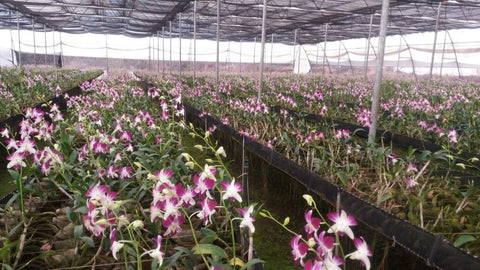Orchid Farming Business Plan: Strategic Changes for Increased Profitability
Orchid farming has gained attention as a lucrative venture in India due to its earning potential. However, like any business, success requires proper planning and management. This guide will walk you through the basics of orchid farming, focusing on facts about orchids, how to grow and care for them, and essential management practices.

Facts About Orchids:
- Orchids thrive on all continents except Antarctica, displaying a wide range of colors, sizes, and species.
- Popular orchid species include Phalaenopsis, Cymbidium, and the flavorful Vanilla orchids found in tropical regions.
- Orchid cultivation demands patience and tailored care, given the diverse environmental requirements of different species.
- Rising demand for orchids is contributing to their increasing rarity.
- Orchids span the color spectrum except for black, with the smallest being "Platystele Jungermannioides" and the largest "Grammatophyllum Speciosum."
- Fascinatingly, orchids are even used in Turkish ice cream production.
How to Grow Orchids: Step-by-Step Guide
- Choose the Right Medium: Orchids typically grow on tree bark or other mediums. Attach them to tree bark, coconut husks, or wooden slabs.
- Watering: Orchids dislike excess water. Ensure good drainage by using pots with holes on all sides. Water the root area and medium without wetting the leaves and flowers.
- Light: Provide bright indirect sunlight, avoiding direct sun exposure. Different species have varying light requirements.
- Temperature: Keep the temperature between 60-85°F (20-30°C), with moderate differences between day and night.
- Humidity: Maintain high humidity levels, especially in dry seasons, using humidifiers if needed.
- Fertilizing: Regularly use liquid orchid fertilizers, selecting from available options in the market.
- Potting and Repotting: Repot occasionally if roots outgrow the pot. Refresh the potting medium with tree bark or coal.
- Pruning: Remove old or dead stems for healthier growth.
- Training and Division: Orchids generally don't need training, but you can divide them if they become crowded.

Management Considerations:
- Investment: Orchid farming success requires a prudent investment in quality plants, equipment, and suitable facilities.
- Species Selection: Choose orchid species that suit your climate and market demand.
- Environment Control: Create ideal growing conditions, including light, temperature, humidity, and ventilation.
- Pest and Disease Management: Regularly inspect plants for pests and diseases. Use appropriate treatments and preventive measures.
- Market Research: Understand the market demand for various orchid species. Cater to popular preferences to maximize earnings.
- Continuous Learning: Stay updated with orchid care techniques and market trends through workshops, seminars, and online resources.
- Networking: Connect with fellow orchid farmers, suppliers, and buyers to enhance your knowledge and market reach.
Conclusion:
Orchid farming can be a profitable venture in India with the right knowledge and approach. By understanding the specific needs of different orchid species and implementing effective care and management practices, you can increase your chances of success. Remember, patience, dedication, and continuous learning are key to thriving in the orchid farming business.




Leave a comment